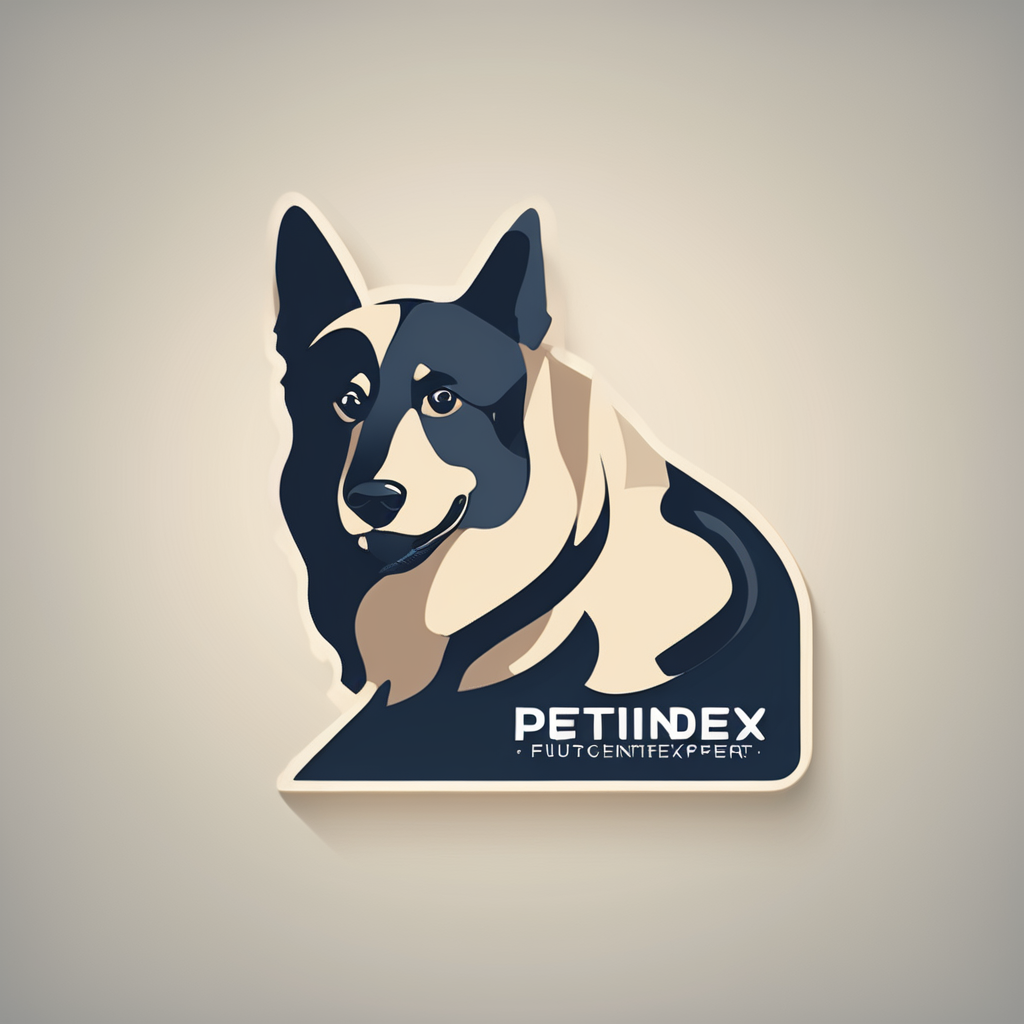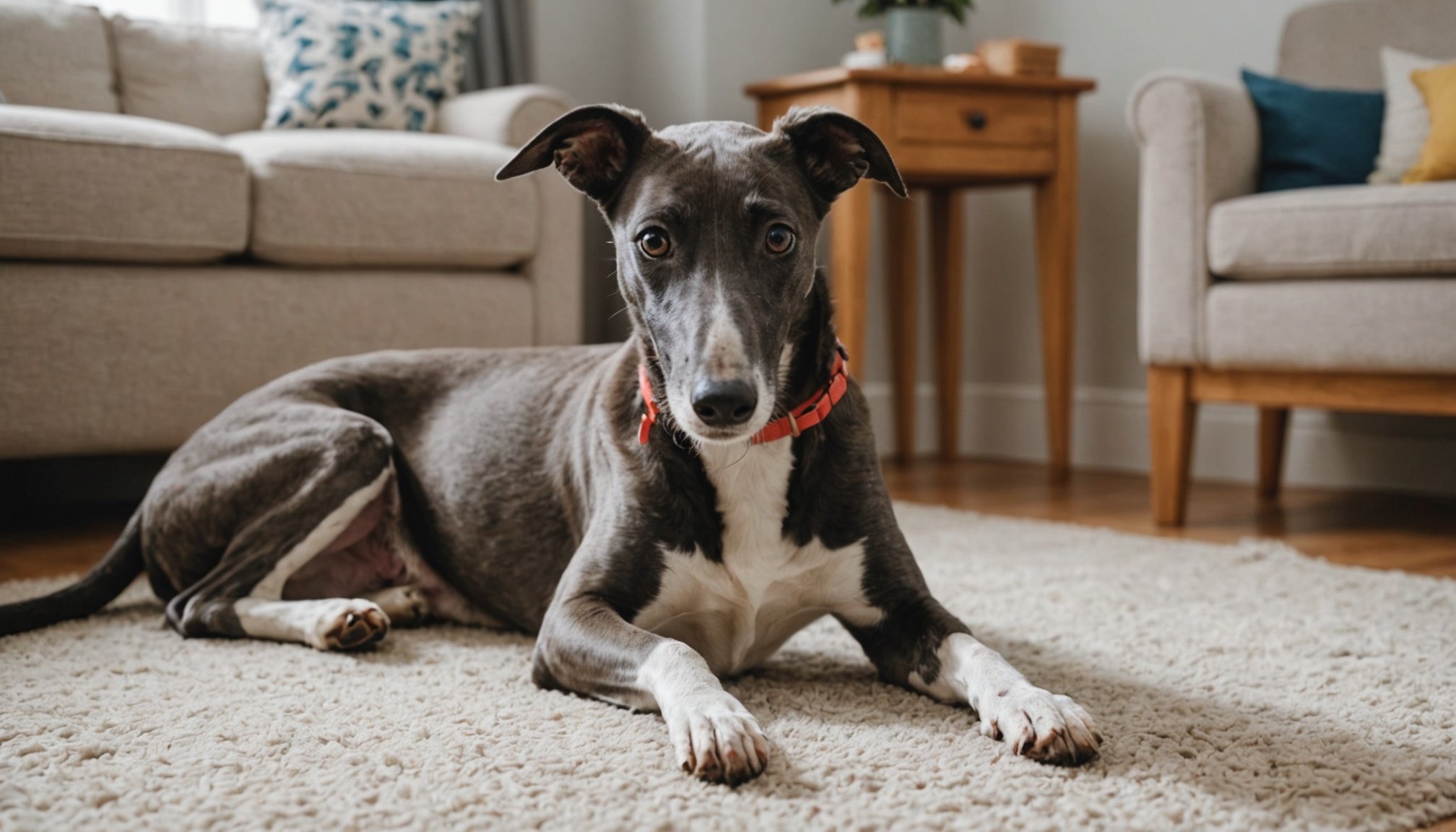Welcoming a Rescue Greyhound into Your Home with Young Children: A Comprehensive Guide
Preparing Your Home and Family for the New Arrival
Before bringing a rescue greyhound into your home, especially if you have young children, it’s crucial to prepare both your home and your family. Here are some key steps to ensure a smooth and safe transition for everyone.
Home Preparation
- Safety Proofing: Greyhounds are known for their speed and agility, but they can also be clumsy. Remove any breakable items from low shelves, secure any loose wires, and block off areas you don’t want your dog to access.
- Dog-Proofing: Greyhounds are sight hounds and can be easily distracted. Ensure your yard is securely fenced, and consider blocking off any areas where your dog might escape or get injured.
- Comfortable Spaces: Provide a comfortable and quiet space for your greyhound to rest. Greyhounds are often referred to as “40 mph couch potatoes” because they love to sleep, so a cozy bed in a quiet area is essential.
Family Preparation
- Educate Your Children: Teach your children how to interact gently with the dog. Greyhounds are not typically aggressive, but they can be sensitive. Explain the importance of not teasing, pulling their ears, or disturbing them when they are sleeping.
- Set Boundaries: Establish clear rules for how the children should behave around the dog. For example, they should not try to ride the dog or pull its tail.
- Involve Your Children in the Process: Let your children help with simple tasks like feeding, walking, or brushing the dog. This can help them feel more connected and responsible.
Understanding Greyhound Behavior and Needs
Greyhounds have unique personalities and needs that are important to understand before adopting.
Also to discover : Top Strategies for Successfully Socializing Your Young Shiba Inu with Other Pets
Temperament
- Calm Nature: Greyhounds are generally very calm and laid-back. They make excellent family pets because they are not typically aggressive and are very gentle.
- Exercise Needs: While greyhounds are built for speed, they don’t require a lot of exercise. Short, regular walks and playtime are sufficient. However, they do need regular opportunities to stretch their legs and run freely in a secure area.
- Socialization: Greyhounds are social dogs and thrive on interaction. They need to be socialized well, especially if they are coming from a racing background.
Health Considerations
- Health Checks: Before adopting, ensure the greyhound has had a thorough health check. Greyhounds can be prone to certain health issues like bloat, heart problems, and skin allergies.
- Diet: Greyhounds have specific dietary needs. They require high-quality dog food that is rich in protein. Consult with your vet to determine the best diet for your new dog.
The Adoption Process
The adoption process for a rescue greyhound involves several steps to ensure you find the right dog for your family.
Finding the Right Greyhound
- Adoption Organizations: Work with reputable greyhound adoption organizations. These organizations often have a wide range of dogs available, and they can help match you with a dog that fits your family’s lifestyle.
- Meet and Greet: Arrange a meet and greet with the dog you’re interested in. This is crucial to see how the dog interacts with your family, especially your children.
Home Visits and Interviews
- Home Visits: Many adoption organizations will conduct a home visit to ensure your home is safe and suitable for a greyhound.
- Interviews: Be prepared to answer questions about your lifestyle, your experience with dogs, and how you plan to care for the greyhound.
Integrating Your Greyhound into Your Home
Once you’ve adopted your greyhound, it’s time to integrate it into your home.
This might interest you : Proven Strategies to Successfully Housebreak a Stubborn Basset Hound: Tips for Every Owner
Initial Introduction
- Gradual Introduction: Introduce your greyhound to your home gradually. Start with one room and gradually introduce more areas as the dog becomes more comfortable.
- Supervise Interactions: Always supervise interactions between your greyhound and your children, especially in the initial stages.
Establishing a Routine
- Feeding Schedule: Establish a regular feeding schedule to help your greyhound feel secure and develop a routine.
- Exercise Routine: Develop a regular exercise routine that includes short walks and playtime. This helps your greyhound adjust to its new environment.
Training Your Greyhound
Training is essential for any dog, and greyhounds are no exception.
Basic Commands
- House Training: Greyhounds are relatively easy to house train because they are clean animals and prefer not to soil their living space.
- Basic Obedience: Teach basic obedience commands like “sit,” “stay,” and “come.” Positive reinforcement techniques work well with greyhounds.
Managing Separation Anxiety
- Gradual Separation: If your greyhound suffers from separation anxiety, start by leaving the house for short periods and gradually increase the time.
- Leave a Familiar Object: Leave an article of clothing or a familiar object with your scent to provide comfort when you are away.
Ensuring Safety with Young Children
When you have young children, it’s crucial to ensure their safety and the safety of your new dog.
Supervision
- Constant Supervision: Always supervise interactions between your children and the dog. This is especially important in the early stages of integration.
- Teaching Children How to Interact: Teach your children how to interact gently with the dog. Here are some key points:
- Gentle Touch: Encourage gentle touch and avoid rough play.
- Respect Personal Space: Teach children to respect the dog’s personal space and not to disturb it when it is sleeping.
- No Teasing: Ensure children understand not to tease the dog or pull its ears and tail.
Creating a Safe Environment
- Secure Toys and Belongings: Keep toys and belongings out of reach to avoid any conflicts over possessions.
- Designate Dog-Free Zones: Designate certain areas as dog-free zones, such as the children’s playroom or bedrooms, to give both the dog and the children their own space.
Practical Tips and Insights
Here are some practical tips and insights to help you navigate the process of adopting and integrating a rescue greyhound into your home with young children.
Tips for a Smooth Transition
- Be Patient: Integrating a new dog into your home takes time. Be patient and allow your dog to adjust at its own pace.
- Consistency: Consistency is key when training your dog. Stick to a routine and ensure all family members are on the same page.
- Positive Reinforcement: Use positive reinforcement techniques when training your dog. Reward good behavior with treats and praise.
Real-Life Examples
- Tundra’s Story: Tundra, a rescue greyhound, needed time to adjust to her new family. When she finally felt comfortable, the bond between her and her family was incredible. Her story highlights the importance of patience and giving your dog the time it needs to adjust[4].
Financial and Time Commitments
Adopting a rescue greyhound comes with both financial and time commitments.
Financial Commitments
| Expense | Estimated Cost |
|---|---|
| Adoption Fee | $50-$200 |
| Spaying/Neutering | $50-$500 |
| Vaccinations | $50-$100 |
| Microchipping | $50-$100 |
| Food and Supplies | $50-$100/month |
| Veterinary Care | $500-$1000/year |
Time Commitments
- Daily Care: Greyhounds need regular care, including feeding, walking, and playtime. Allocate at least 1-2 hours a day for these activities.
- Training: Training your greyhound requires time and effort. Allocate time each day for training sessions.
- Socialization: Socialization is crucial for greyhounds. Ensure you have time to take your dog to social events or dog parks.
Welcoming a rescue greyhound into your home with young children can be a rewarding and enriching experience for the entire family. By preparing your home, understanding greyhound behavior and needs, and ensuring safety, you can create a loving and stable environment for your new dog.
Final Thoughts
“Greyhounds are not our whole life, but they make our lives whole,” says a greyhound adopter. With the right preparation, patience, and love, you can provide a happy and safe home for your rescue greyhound.
Quotes from Adopters
- “Our greyhound has brought so much joy and love into our home. It’s been an incredible experience watching her adjust and become a part of our family.”[4]
- “The key to a successful adoption is patience and consistency. Give your dog the time it needs, and you’ll be rewarded with a lifelong companion.”[4]
By following this guide, you’ll be well on your way to creating a harmonious and loving home for your new greyhound, where both your dog and your children can thrive.
Introducing Your Greyhound to Children
Establishing a positive dog-child interaction begins with careful planning and patience. It is crucial to adopt introduction techniques that cater to both the greyhound and the children involved. Begin by allowing the greyhound to explore the scent of the child by using items of clothing or toys that carry the child’s scent. This familiarises the dog with the new family member even before a physical meeting.
When the time arrives for an actual introduction, ensure that all interactions are supervised meetings. During these sessions, measure the comfort levels of both the greyhound and the children. Observe closely for any signs of anxiety or unease, in the dog or the child.
Supervised interactions also serve a dual purpose, allowing adults to coach children on appropriate behavior around dogs. Teach them to approach the greyhound calmly and always gently, avoiding running around or shouting, as these actions can upset even the most placid pets.
Enforcing these practices will ensure that the relationship between your greyhound and children is both safe and rewarding, providing a strong foundation for enduring harmony in the household.
Training and Socialization
For greyhound rescue dogs, effective dog training is essential to help them adapt to their new homes. These athletic dogs often benefit from obedience training early in their adoption process to cultivate good manners and establish a strong bond with their owners.
Socializing dogs, particularly those rescued, involves introducing them to various environments, people, and other animals. Early socialization with children and other pets is crucial to ensure they remain calm and well-behaved in social settings. Greyhounds are generally gentle, making them suitable companions, but early introductions can help prevent anxiety.
Several resources can enhance training effectiveness. Professional obedience classes offer structured training settings, providing an excellent foundation for discipline and control. Online platforms offer flexible options through video tutorials and specific training modules. Tools like clickers, treats, and positive reinforcement methods play a critical role in motivating dogs. They facilitate communication, making the learning process enjoyable and less stressful for both the dog and the owner.
Consistency remains a key factor; hence, family involvement in training and using a unified approach makes the training process smoother and more reliable. Greyhounds thrive with patient training in a safe and loving environment.
Establishing Routines and Boundaries
Navigating life with a dog becomes smoother with routines for dogs and setting thoughtful boundaries. Consistency in feeding and walks can make a world of difference. It reinforces good behaviour and aids in managing the dog’s expectations and stress levels. Dogs thrive on schedules, so feeding them at the same time every day and maintaining regular walking hours is essential.
Beyond routines, it’s crucial to teach children to respect the dog’s space and needs. This involves instructing them to give the dog room, especially when it’s eating or resting. Children should understand that even the friendliest dogs can react if they’re startled or feel threatened.
Moreover, setting boundaries isn’t just about physical space. It helps to establish what areas and items are off-limits for the dog, ensuring both their safety and that of the household. Boundaries form a structured environment where the dog can learn what behaviours are expected.
Ensuring safety through established routines and boundaries provides a harmonious living space for both pets and families. With patience and consistency, these practices become second nature, allowing everyone to coexist comfortably and happily.
Addressing Common Concerns
Introducing a greyhound to families with children can come with its own set of common challenges. Understanding these from the outset helps in managing expectations and facilitating a smooth transition.
Common Challenges
Typically, families express concerns about the greyhound’s ability to adapt to a bustling home environment. Greyhounds, known for their gentle demeanor, may initially exhibit behavioral issues such as anxiety or shyness when faced with new situations. Such traits are natural, considering their background and previous routines.
Expert Advice
Expert advice suggests a calm and consistent approach for easing anxiety or behavioral concerns. Experts recommend gradually acquainting the greyhound with its new home and family members, introducing children to the dog under supervision to build mutual trust. Providing a quiet space for the dog helps them retreat and recharge when needed, which can be crucial in managing behavioral issues.
Community Resources
For additional guidance, numerous community resources exist that offer ongoing support and advice. These resources include local greyhound owner groups, online forums, and expert consultations that can provide tailored expert advice. Engaging with these communities allows for shared experiences and support, ensuring a positive outcome for both the greyhound and the family.
Benefits of Welcoming a Rescue Greyhound
Integrating a rescue greyhound into your home can offer numerous emotional and physical benefits. These family dogs are known for their gentle demeanor and ability to adapt quickly to household routines. Their calm and quiet nature often provides a soothing presence, particularly benefiting households with children or individuals experiencing stress.
Families who have adopted rescue greyhounds often report a sense of fulfillment and joy. For instance, the Johnson family noted how their greyhound quickly became a source of comfort during challenging times, enhancing their emotional well-being. Such greyhound advantages can create a harmonious and nurturing family environment.
Moreover, the bonding experience with a rescue dog contributes to teaching children compassion and responsibility. Greyhounds are typically low-maintenance, requiring moderate exercise, making them suitable for various family dynamics.
-
Emotional Benefits:
-
Reduces stress
-
Promotes happiness and companionship
-
Physical Benefits:
-
Encourages regular walks and physical activity
-
Offers routine care and maintenance that can be therapeutic
Welcome a greyhound into your family, and experience the unique blend of companionship, tranquility, and physical wellness they bring, forging strong bonds and an enriched home atmosphere.











